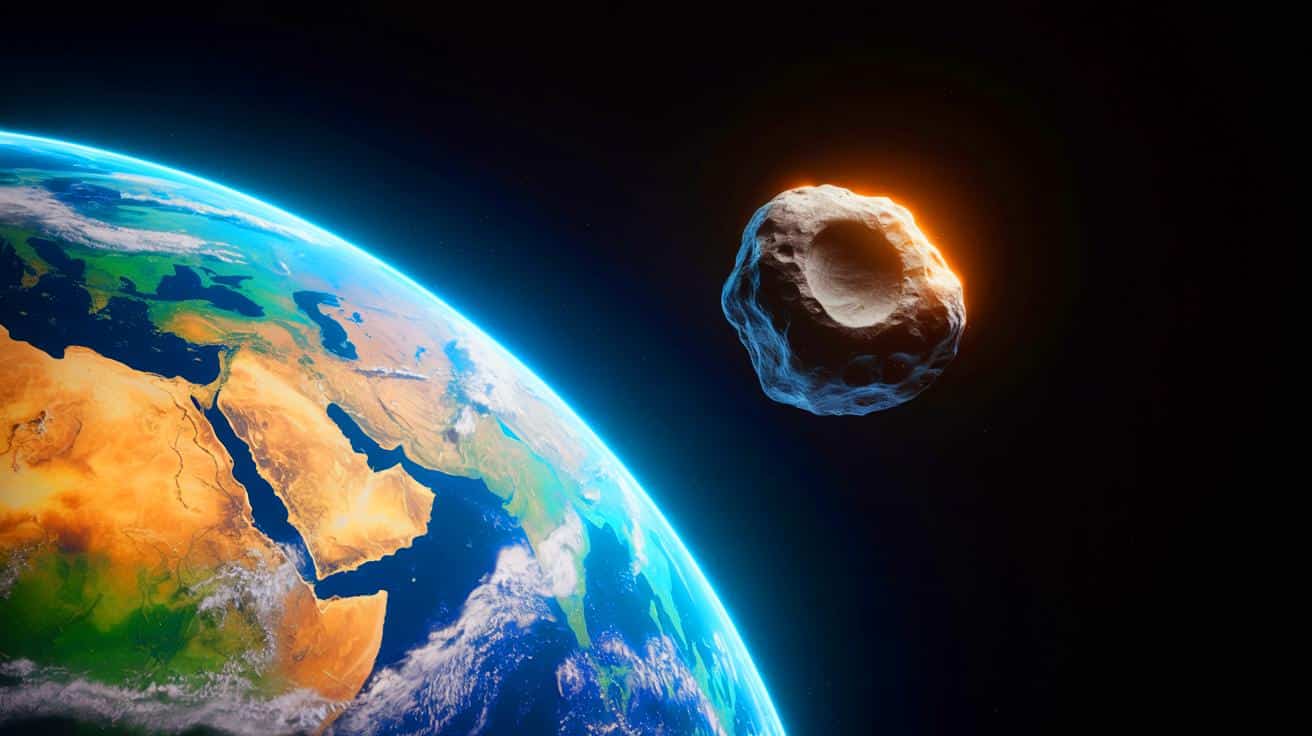IN A NUTSHELL
🪐 Asteroid 2025 TF passed Earth at just 266 miles, marking the second-closest flyby on record.
🔭 Detection challenges remain as 2025 TF was not identified until hours after its closest approach.
🌌 The asteroid poses no threat; its size (3.3 to 9.9 feet) would result in a harmless atmospheric burn-up.
🚀 Planetary defense efforts emphasize improved detection and potential deflection technologies.
In recent weeks, the Earth narrowly avoided a potential collision with a small asteroid, designated as 2025 TF. This celestial rock made an exceptionally close approach, skimming past our planet at a distance comparable to that of the International Space Station (ISS). The encounter marks the second-closest non-impacting flyby on record, highlighting the persistent presence of near-Earth objects. While the asteroid was detected only after its closest approach, it serves as a reminder of the ongoing need for vigilant observation of our cosmic neighborhood. Such events underline the importance of continued investment in astronomical surveys and space monitoring systems.
Asteroid 2025 TF’s Close Encounter
The asteroid 2025 TF passed over Antarctica at an altitude of approximately 266 miles (428 kilometers), within the orbit range of the ISS. This close shave is significant but not unprecedented. In November 2020, 2020 VT4 holds the record for the closest flyby, passing at a mere 368 kilometers. These encounters are classified as non-impacting flybys, where the asteroid does not collide with Earth or enter its atmosphere.
While the proximity of 2025 TF might alarm some, it is essential to note that its size, ranging from 3.3 to 9.9 feet (1 to 3 meters), posed no real threat. At most, it could have provided a brief celestial display, burning up in the atmosphere like a shooting star. Such small asteroids are unlikely to cause significant damage, emphasizing that their detection serves more as a precautionary measure than an immediate cause for concern.
Detection and Tracking Challenges
The discovery of 2025 TF underscores the challenges faced in detecting small asteroids. It was first reported by the Kitt Peak-Bok Observatory in Arizona, several hours after its closest approach. However, data from the Catalina Sky Survey revealed that it had been captured earlier, though not immediately identified. This sequence of events illustrates the difficulties in tracking near-Earth objects, particularly those of modest size.
The incident highlights the need for improvements in our detection capabilities. While larger asteroids are more easily spotted, smaller ones often evade immediate detection. Enhancing our astronomical survey systems is crucial for timely identification and tracking of these cosmic visitors. The development of more advanced telescopes and data analysis techniques could significantly bolster our ability to monitor the skies.
Future Encounters and Long-Term Monitoring
Asteroid 2025 TF is expected to return to Earth’s vicinity in April 2087, albeit at a much safer distance of around 8 million kilometers, or about 21 times the distance to the Moon. This prediction is based on estimates from the Jet Propulsion Laboratory (JPL) concerning the asteroid’s future orbit. Such forecasts are essential for long-term monitoring and assessing potential threats from near-Earth objects.
As our understanding of asteroid orbits improves, we can better prepare for future encounters. However, the unpredictability of these celestial bodies necessitates ongoing vigilance. The potential for undiscovered asteroids to unexpectedly approach Earth remains a concern for astronomers and planetary defense experts alike. Continued research and observation are vital to ensure preparedness for any potential threats.
The Importance of Planetary Defense
The recent flyby of 2025 TF serves as a reminder of the importance of planetary defense initiatives. While this particular asteroid posed no threat, larger objects could have catastrophic consequences if left undetected. Organizations such as NASA and international space agencies are actively working to develop strategies for mitigating potential asteroid impacts.
Efforts in planetary defense focus on improving detection systems, developing potential deflection technologies, and fostering international collaboration. The possibility of using nuclear explosions to divert asteroids is one such strategy under consideration. As our capabilities in space exploration and technology advance, so too must our preparedness for potential extraterrestrial threats.
In the grand scheme of Earth’s 4.5-billion-year history, encounters with asteroids are not uncommon. They serve as a stark reminder of our planet’s vulnerability to cosmic events. As we continue to explore and understand our universe, how can we ensure that our vigilance keeps pace with the ever-present possibilities of these celestial encounters?
This article is based on verified sources and supported by editorial technologies.
Did you like it? 4.4/5 (27)

